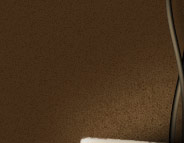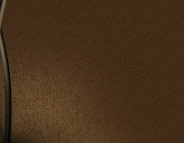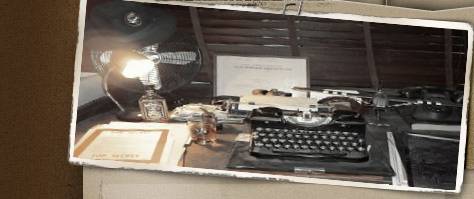| Historical images compared with
the current situations in the exact
locations.
Click on the pictures to
enlarge. |
Holland(1)
Holland(2) Ardennes
Worldwide
Miscellaneous
|
 |
Étretat, early 1940's
At the pebble coastline of this town
in the Seine-Maritime department in
the Normandy region, beach front
houses have been demolished by the
German occupying forces to make room
for concrete and steel obstacles. |
 |
Étretat, early 1940's
A lone German sentry stands guard on
the beach walk with concrete gun
emplacements and the famous natural
arches in the cliffs in the
background. |
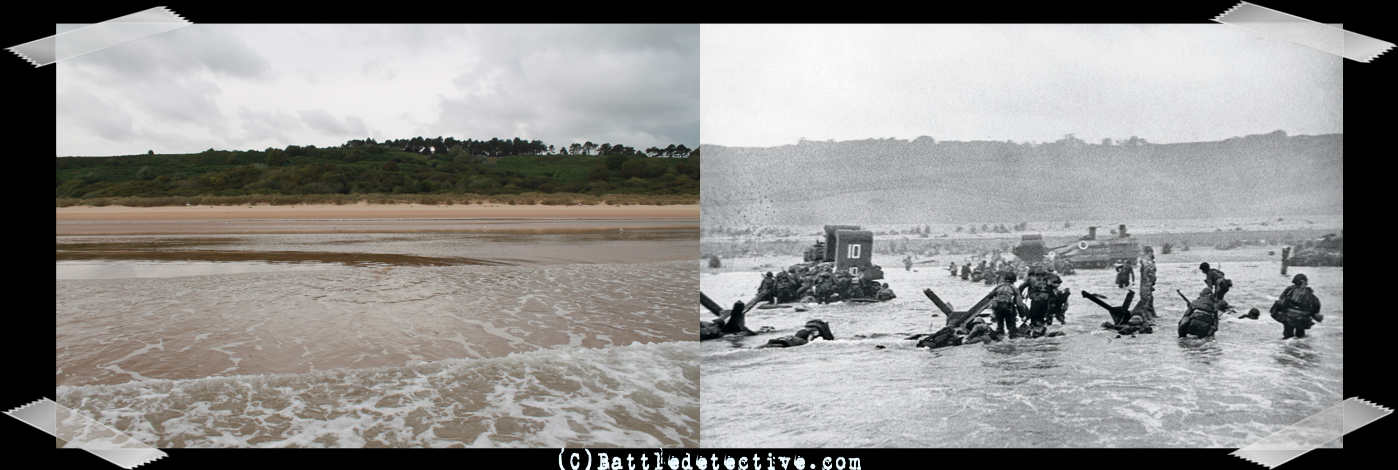 |
Colleville-sur-Mer, June 6th 1944
Photo by Robert Capa showing a group
of infantry men wading ashore,
soldiers taking cover behind
waterproofed M4 Sherman tanks and
the smoke in the dunes further
inland. Today the American Cemetery
is located on top of the bluff on
the right of the photo. |
.jpg) |
Marcouf,
June 6th 1944
Soldiers of the 82nd Airborne
Division advancing forward
cautiously, next to the town church.
Note the modified stairwell leading
to the cemetery with a brick wall
blocking pedestrians from any
traffic.
|
.jpg) |
Marcouf,
June 6th 1944
Soldiers of the 82nd Airborne
Division advancing cautiously next
to the town church. |
.jpg) |
Turqueville,
June 6th 1944
Private First Class Wilbur W.
Shanklin of Regimental Headquarters
Company of the 506th Parachute
Infantry Regiment poses for the
camera, guarding a soldier from the
795th Battalion (Georgian), 739
Grenadier Regt., 709th Infantry
Division. |
.jpg) |
Turqueville,
June 6th 1944
The first two photos are well
known but the uncropped version and
the ones with the Signal Corps
cameramen and unlooking soldiers of
the 4th Infantry Division show that
it is a situation staged for the
cameras. |
.jpg) |
Turqueville,
June 6th 1944
The same scene but seen from
just a different angle. |
.jpg) |
Turqueville,
June 6th 1944
The making of the epic D-Day
paratrooper photo. Signal Corps
cameramen are being watched by
infantrymen of the 4th Division. |
 |
Cherbourg, June 1944
On June 22nd a large assault on
the port town of Cherbourg was
launched. Here, American infantry
crosses the intersection of Avenue
Etienne LeCarpentier and the street
which today is named Voie de la
Liberté. |
 |
Cherbourg, June 1944
A gruesome photo showing the
fierce fighting for the city. An
American soldiers looks at a dead
German soldier in a stairway on Rue
Arman Levéel. Judging from his
wounds, the German most likely died
from the blast of an explosion; not
by gunfire. |
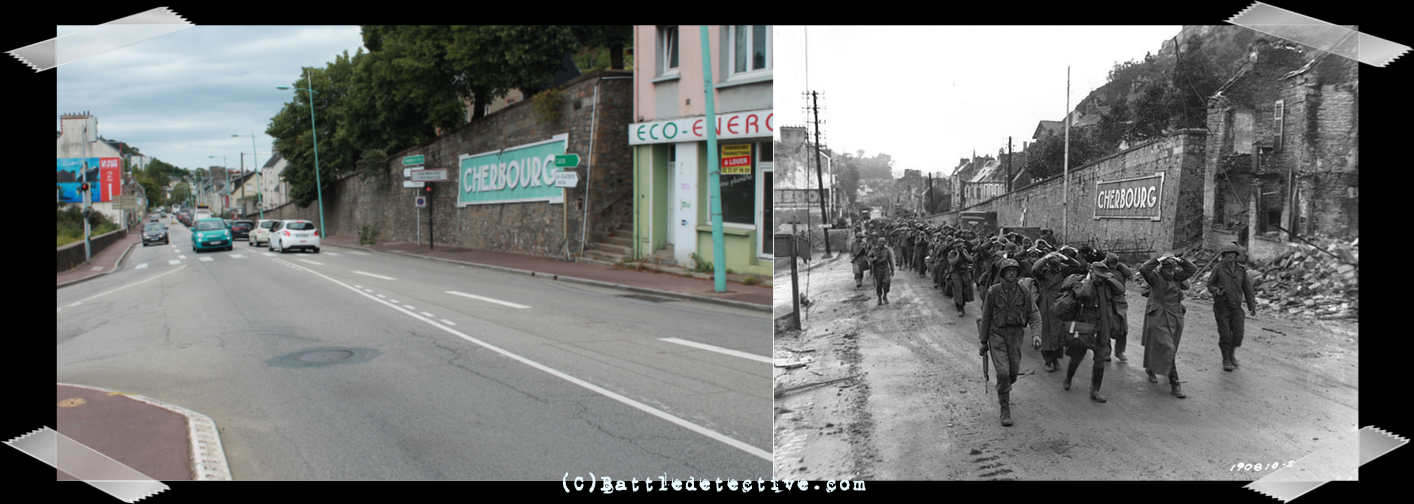 |
Cherbourg, June 1944
German Prisoners of War are
escorted out of town by armed
American soldiers. They are seen
here walking past the large
CHERBOURG sign on Rue Lucet. On
29JUN1944 the German command in the
harbor and the arsenal finally
surrendered to the Allies. |
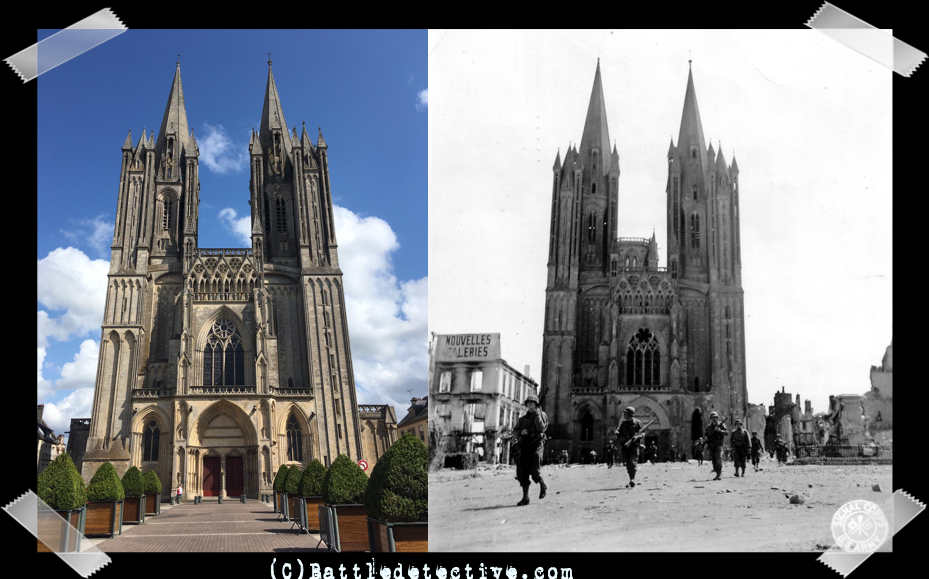 |
Coutances June 28th 1944
American soldiers in the Place du
Parvis Notre Dame in front of the
Cathedral.
On 24JUL1944, the Americans launched
Operation "Cobra" and 4 days later,
the 4th Armored Division moved from
Périer to Coutances using the D971
highway.
The Germans defending this sector,
retreated and left the city to the
Americans who at the day seize the
ruins of Coutances.
|
 |
La Haye-du-Puits, July 1944
An older citizen of La Haye
looks at the damage caused by Allied
bombardments.
He is standing next to the town's
public urinal opposite the church
and looks in the direction of the
market square; named Place du
General DeGaulle today. |
..jpg) |
La Haye-du-Puits, July 1944
Photo taken in front of the
church in the center of town in
early July 1944. American Military
Policemen search the personal
belongings of a very young German
Prisoner of War (POW) who is also
ordered to take his shoes off. Two
other German POW's stand against the
church wall with their hands up. |
..jpg) |
La Haye-du-Puits, July 1944
The young POW is then told to
join his comrades who are now
standing left of the church
entrance.
After the war, the pavement in front
of the church has been raised and
some of the steps have been removed. |
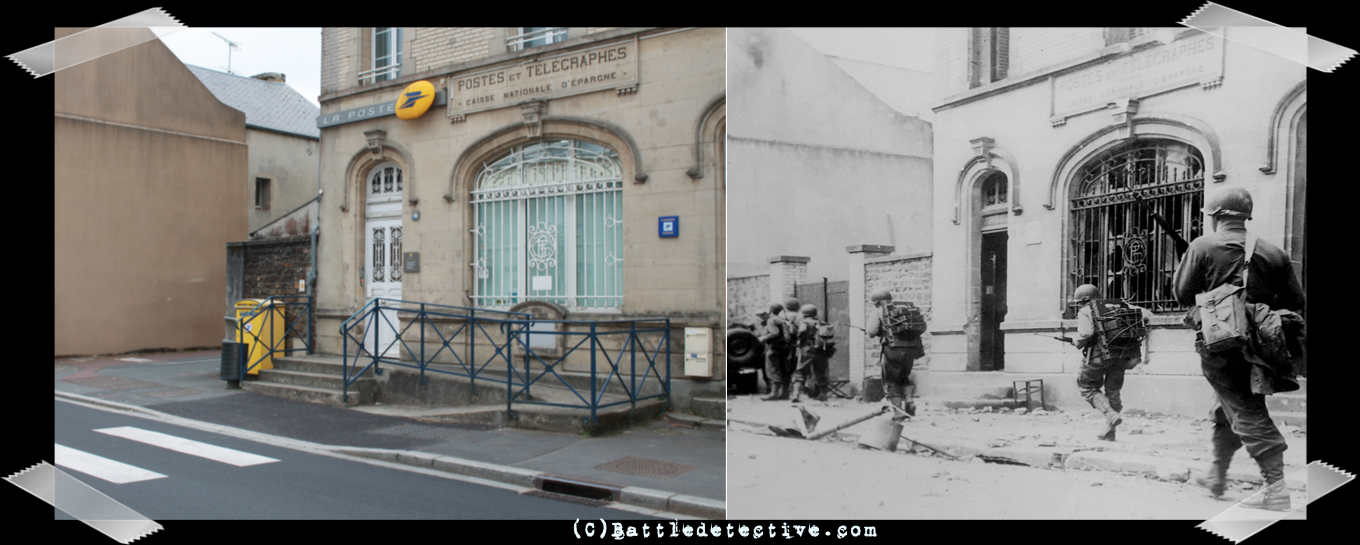 |
La Haye-du-Puits, July 1944
American infantry moves toward
the center of town past the
Postoffice building in a street
which is today named Rue du General
LeClerc in July 1944.
Not the ammunition bearers with
their pack trays on their backs
followed by and infantryman with a
fixed bayonet. |
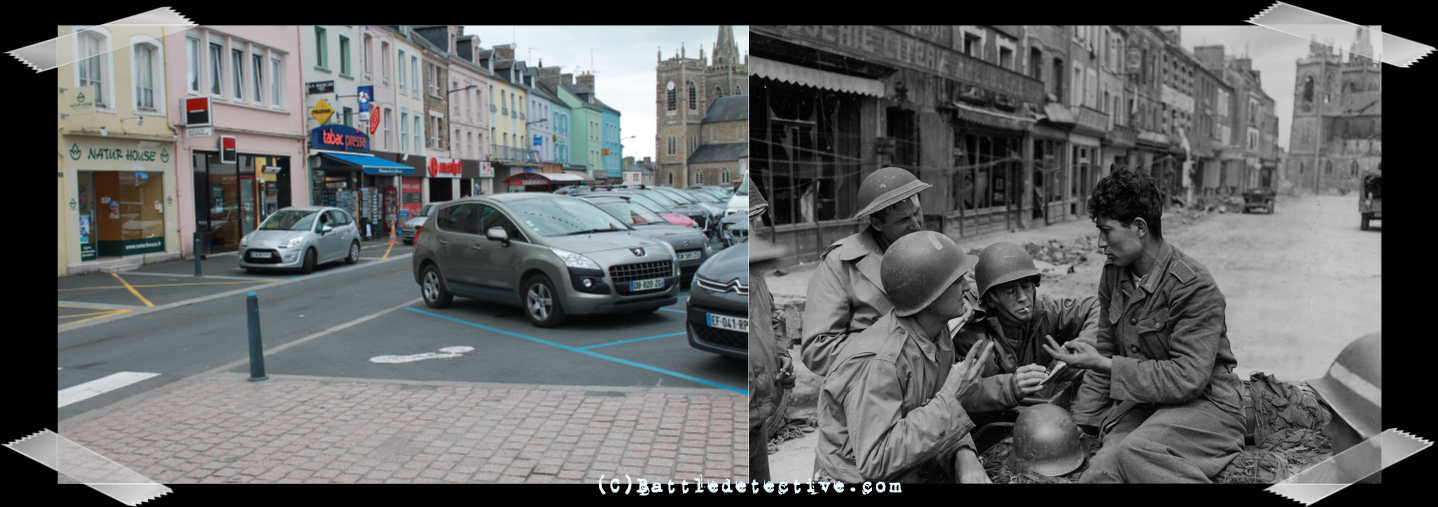 |
La Haye-du-Puits, July 1944
U.S. Navy officer Francis Leu
and British correspondents interview
an Asian soldier in a Wehrmacht
uniform; presumably from a so-called
"Ost-Battalion" made up of
volunteers from Eastern European
countries. |
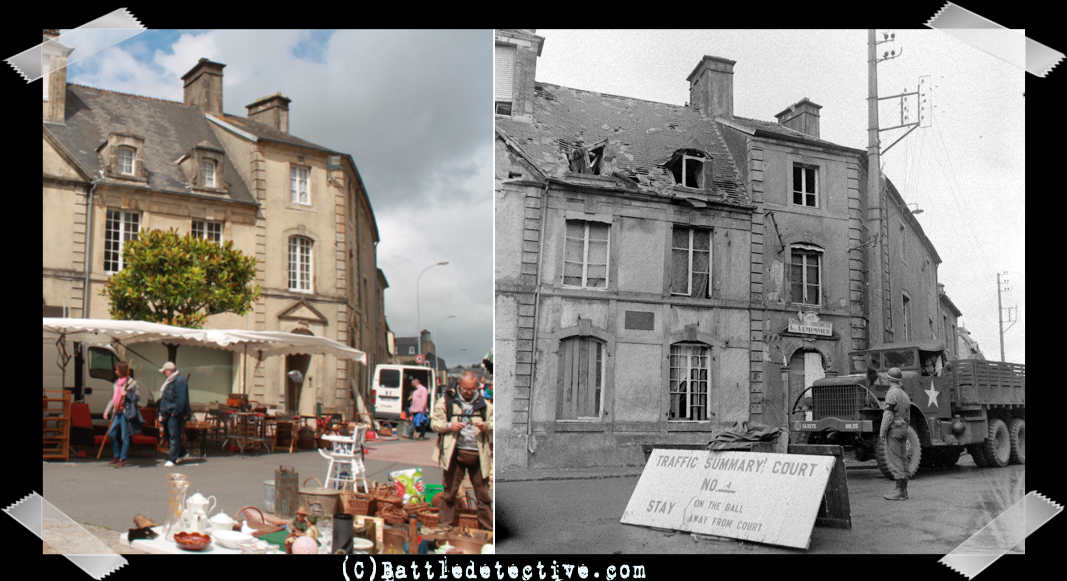 |
Saint-Sauveur-le-Vicomte, July
1944
The US Army has established
Traffic Summary Court No. 4 in a
building on the town square; today
named Place Ernest LeGrand.
The sign advises truck drivers in
the Red Ball Express not to "Keep 'em
Rolling", but to "Stay on the ball
and away from court".
When cited by Military Police,
truckers had to appear in court to
stand trial for traffic violations.
|
 |
Saint-Sauveur-le-Vicomte, July
1944
A heavy weapons platoon of the
315th Infantry Regiment, a unit of
the American 79th Infantry Division,
moves in the direction of the west
coast of Normandy after liberating
La-Haye-du-Puits on July 9th 1944. |
 |
Cinthaux, August 8th 1944
Tiger "007" of German SS Panzer
ace Michael Wittmann is seen here
after it had been knocked-out by
Allied tanks. More on this historic
battle in
Battle Study 31. |
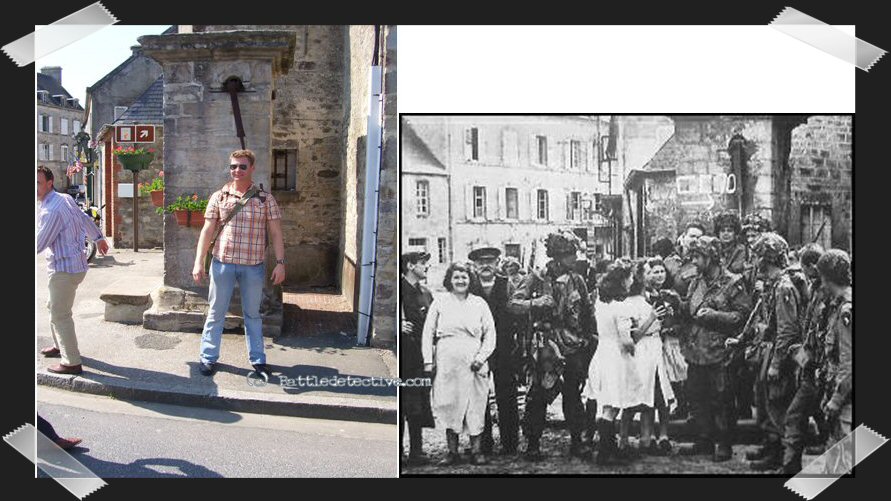 |
Sainte Marie du Mont, June 6th
1944
Soldiers of the 101st meet local
civilians at the town pump. In front
of the pump in the "Now-"photo, is
Battle-detective Tom. His friend
Antoine is trying to sneak out of
the picture.
|
 |
Carentan, June 20th 1944
Carentan was libererated by elements
of the 101st on the 12th of June. On
the 20th an award ceremony was held
in the Place de La République. On
June 4th 2006 this ceremony was
reenacted, organized by the Carentan
Historical Center.
Battledetective.com was there. |
 |
Carentan, June 20th 1944
This is a comparison of the Place de
la République as in the previous
comparison, but at an average day. |
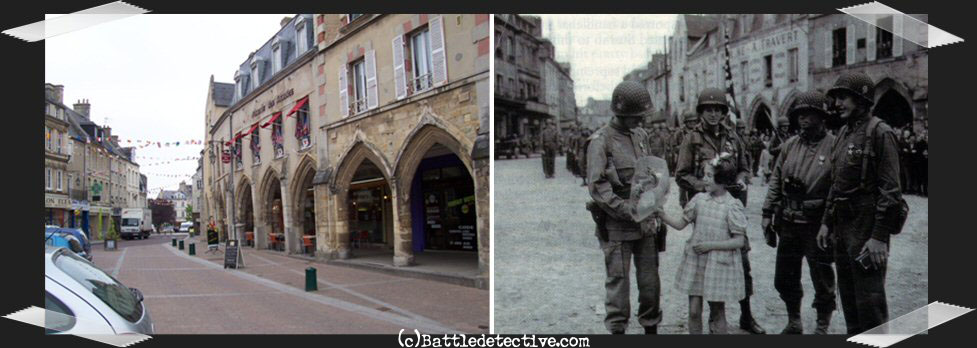 |
Carentan, June 20th 1944
The same square from a different
angle. Note the characteristic
arcades on the right. |
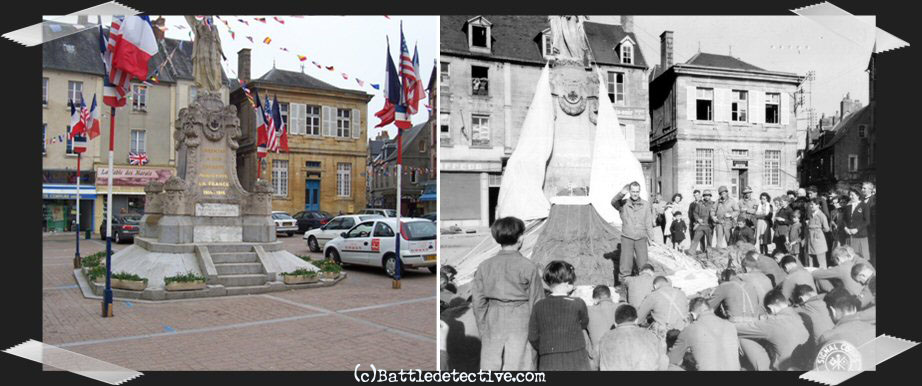 |
Carentan, June 1944
Again, the Place de la République
and the monument to the fallen sons
of Carentan in World War I. Here, an
army priest leads an open air church
service. Note parachute canopies on
monument base. |
 |
Ravenoville, June 6th 1944
Paratroopers of various sub-units of
the 101st gather at the Marmion Farm
to regroup and engage the enemy.
Note the French Renault tracked
weapons carrier in the front of the
Then-picture. |
 |
St. Côme-du-Mont, June 1944
This junction of the road from St
Côme du Mont to Carentan and the
road to St Marie-du-Mont was named
"Dead Man's Corner" by American
soldiers because of the dead tank
commander still visible in the
turret of this Stewart tank. Here we
look up the road to St. Marie-du-Mont.
Note the same type Renault weapons
carries as in the previous
Then-picture.
|
 |
St. Côme-du-Mont, June 1944
The same road junction and the same
knocked out light tank of "D"
squadron/70th Tank Bn photographed
from a different position. In the
left corner of the picture is the
road to St. Côme-du-Mont. |
 |
St. Côme-du-Mont, June 1944
The same location as in the previous
comparison. The Carentan Historical
Center opened an excellent museum in
the house on Dead Man's Corner in
2006. This is our battledetective
car in the position of the Stewart
tank in our 2007 comparison. |
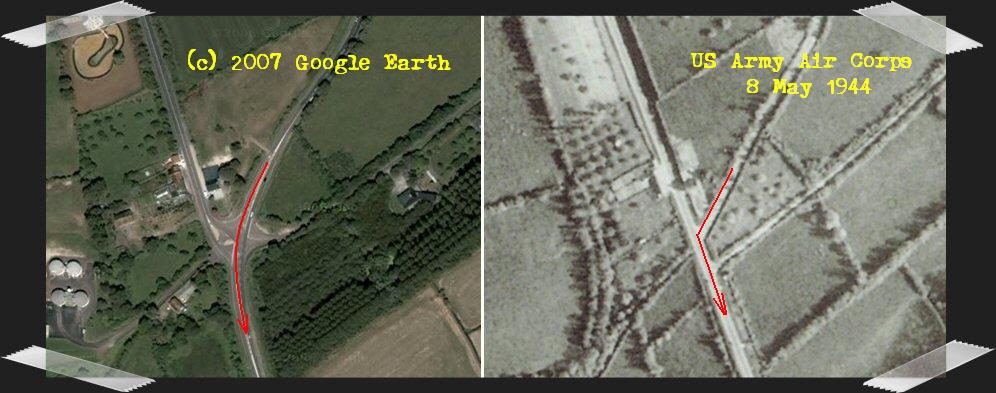 |
St. Côme-du-Mont, June 1944
These aerial photographs from 2007
and 1944 show that the road junction
is a bit different today. The angle
of the road from St. Marie-du-Mont
is not as sharp as it was in 1944
making it safer for traffic. |
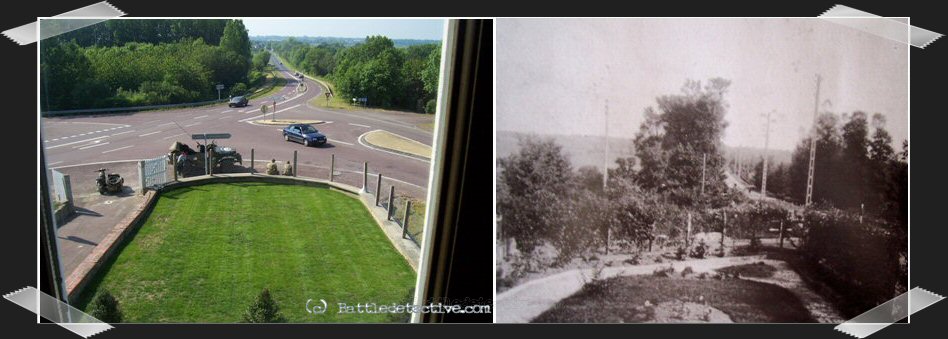 |
St. Côme-du-Mont, June 1944
View from the upstairs window in the
Dead Man's Corner House looking
South towards Carentan. Note that
the paths of the roads have changed
a little bit since 1944. |
 |
Ste-Mère-Eglise, June 1944
An American soldier takes a shot at
the church tower of St. Mère-Eglise,
probably at a German sniper, hiding
in the bell fry. Note the posters
with proclamations from the German
occupiers on the wall. Posters for
the 2007 French elections can be
seen in almost the same spot in our
comparison. A striking symbol for
the freedom the invasion brought in
1944. |
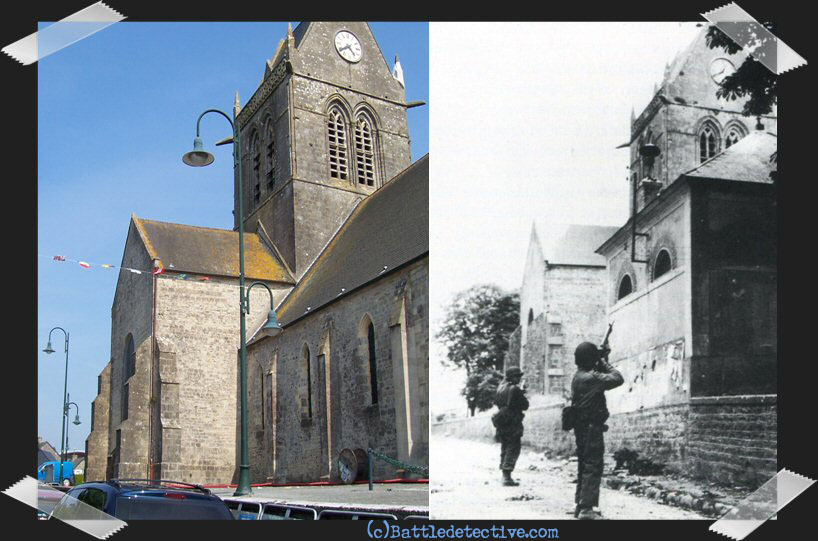 |
Ste-Mère-Eglise, June 1944
Almost the same spot, but now the GI
in the previous picture is joined by
his buddy. |
|
|
|
